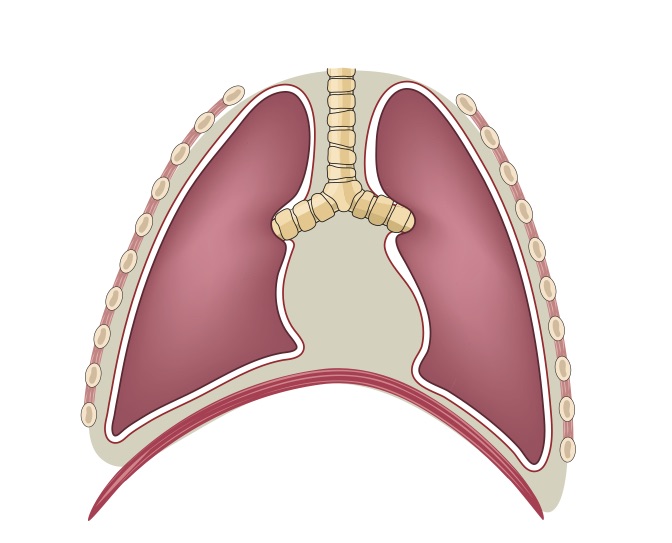Level 1A Evidence that Reducing Retained Blood Prevents POAF and Effusions After Cardiac Surgery
 The Journal of Thoracic and Cardiovascular Surgery published a recent manuscript entitled “Systematic review and meta-analysis of randomized controlled trials assessing safety and efficacy of posterior pericardial drainage in patients undergoing heart surgery”. Nineteen randomized controlled trials enrolled 3,425 patients who were analyzed to determine if efforts to reduce retained blood around the heart after heart surgery might reduce postoperative atrial fibrillation (POAF), retained blood syndrome (pericardial effusions, tamponade, pericardial effusions), hospital resource utilization, and death.1 The focus was the addition of the surgical technique known as “posterior pericardiotomy,” where the surgeon creates a long incision in the posterior pericardium to drain any retained blood into the pleural space, thereby shunting it internally away from the pericardium to the pleural space.
The Journal of Thoracic and Cardiovascular Surgery published a recent manuscript entitled “Systematic review and meta-analysis of randomized controlled trials assessing safety and efficacy of posterior pericardial drainage in patients undergoing heart surgery”. Nineteen randomized controlled trials enrolled 3,425 patients who were analyzed to determine if efforts to reduce retained blood around the heart after heart surgery might reduce postoperative atrial fibrillation (POAF), retained blood syndrome (pericardial effusions, tamponade, pericardial effusions), hospital resource utilization, and death.1 The focus was the addition of the surgical technique known as “posterior pericardiotomy,” where the surgeon creates a long incision in the posterior pericardium to drain any retained blood into the pleural space, thereby shunting it internally away from the pericardium to the pleural space.
In this largest of its kind report, it was determined that posterior pericardial drainage was associated with a 90% reduction of the odds of cardiac tamponade, a 58% reduction in the odds for POAF and associated with significantly shortened (by nearly 1 day) overall length of hospital stay, kidney injury and death.
The evidence concludes that reducing retained blood in the pericardium should be considered a critical goal in all cardiac surgery cases. The outstanding question is what is the best way to reduce retained pericardial blood? Generally, posterior pericardiotomy is done at the end of the case by creating a longitudinal, 4cm long incision parallel and posterior to the phrenic nerve, extending from left inferior pulmonary vein to the diaphragm. It can be performed on the right as well as seen in this video. The problem is, that the technique of posterior pericardiotomy has several important drawbacks and thus not practical and therefore seldom used clinically. These important drawbacks include the potential for:
- Marked increase in clinically significant pleural effusions
- Cardiac herniation
- Bypass-graft herniation
- Bleeding from the cut edges
- Need to manipulate the heart further while coming off pump
- Lung adhesions in the posterior pericardium to manage in future operations
- Not always possible with off-pump cases or minimally-invasive incisions
The consideration for what happens with the shunted blood to the pleural space is not trivial. In this study, there was a 64% increase in the odds of pleural effusion, as one might expect.
In an editorial that followed entitled “Draining the Posterior Pericardial Space: Pericardiotomy vs. Just Another Tube,” the question was asked why can’t this be performed with an enhanced chest tube drainage strategy so the shed blood is externalized and not internally shunted?2 The author questions why this cannot simply be done by routinely adding a posterior mediastinal drainage tube. What this question fails to take into account is the possibility that over 1 in 3 patients have clogged chest tubes, contributing significantly to retained blood around the pericardium even when the posterior tube is placed.3,4,5
One way shown to minimize retained blood is to actively maintain chest tube patency and thus maximally evacuate shed mediastinal blood early in recovery. In a study by Sirch, et al, also in the Journal of Thoracic and Cardiovascular Surgery, patients who had active clearance of chest tubes had a 43% reduction in retained blood and a 33% reduced incidence of postoperative atrial fibrillation with active clearance of chest tubes.6
Alternatively, perhaps the best way to achieve optimal pericardial drainage is not to add the risks of posterior pericardiotomy, but rather adding a strategy to prevent chest tube clogging with Active Chest Tube Clearance in the first few days after cardiac surgery.
The take away message is clear: Strategies to prevent retained mediastinal shed blood have level 1A evidence to back them up. What is not clear, is what is the best way to accomplish this: pericardiotomy or enhanced chest tube drainage strategies? Active clearance of chest tubes appears safer, reduces pleural effusions rather than creating them, and evidence suggests the same outcomes may be achieved with this approach.
References:
- Gozdek M, Pawliszak W, Hagner W, Zalewski P, Kowalewski J, Paparella D, et al. Systematic review and meta-analysis of randomized controlled trials assessing safety and efficacy of posterior pericardial drainage in patients undergoing heart surgery. J Thorac Cardiovasc Surg. 2016: (http://dx.doi.org/10.1016/j.jtcvs.2016.11.057).
- Conti VR. Draining the Posterior Pericardial Space; Pericardiotomy vs. Just Another Tube. J Thorac Cardiovasc Surg. 2016 (http://dx.doi.org/10.1016/j.jtcvs.2016.12.020).
- Karimov JH, Gillinov A M, Schenck L, Cook M, Kosty Sweeney D, Boyle EM, Fukamachi K. Incidence of chest tube clogging after cardiac surgery: a single-centre prospective observational study. Eur J Cardiothorac Surj 2013; 1-8. (https://doi.org/10.1093/ejcts/ezt140).
- Boyle EM, Gillinov AM, Cohn WE, Ley SJ, Fischlein T, Perrault LP. Retained Blood Syndrome After Cardiac Surgery: A new look at an old problem. Innovations in cardiovascular and thoracic surgery. 2015 Sept/Oct:10(5):296-303. (https://doi.org/10.1097/IMI.0000000000000200).
- Balzer, F., von Heymann, C., Boyler, E., Wernecke, K., Grubitzsch, H., and Sander, M. Impact of retained blood requiring reintervention on outcomes after cardiac surgery. J Thorac Cardiovasc Surg. 2016;152:595–601. (https://doi.org/10.1016/j.jtcvs.2016.03.086).
- Sirch J, Ledwon M, Puski T, Boyle EM, Pfeiffer S, Fischlein T. Active Clearance of Chest Drainage Catheters Reduces Retained Blood. Journal of Thoracic and Cardiovascular Surgery.2015 Oct 22. pii: S0022-5223(15)01970-4. (http://dx.doi.org/10.1016/j.jtcvs.2015.10.015).